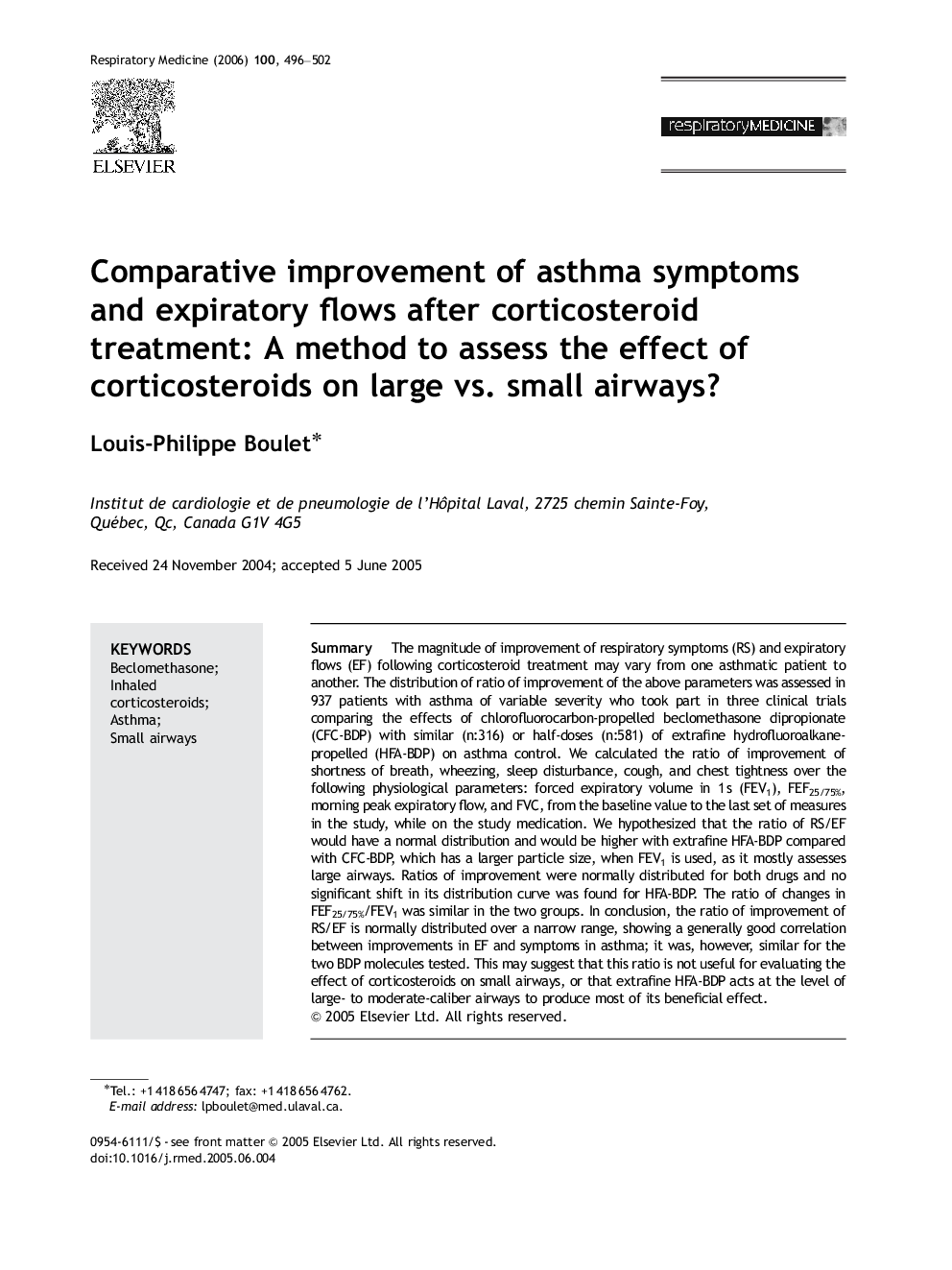| Article ID | Journal | Published Year | Pages | File Type |
|---|---|---|---|---|
| 4212539 | Respiratory Medicine | 2006 | 7 Pages |
SummaryThe magnitude of improvement of respiratory symptoms (RS) and expiratory flows (EF) following corticosteroid treatment may vary from one asthmatic patient to another. The distribution of ratio of improvement of the above parameters was assessed in 937 patients with asthma of variable severity who took part in three clinical trials comparing the effects of chlorofluorocarbon-propelled beclomethasone dipropionate (CFC-BDP) with similar (n:316) or half-doses (n:581) of extrafine hydrofluoroalkane-propelled (HFA-BDP) on asthma control. We calculated the ratio of improvement of shortness of breath, wheezing, sleep disturbance, cough, and chest tightness over the following physiological parameters: forced expiratory volume in 1 s (FEV1), FEF25/75%, morning peak expiratory flow, and FVC, from the baseline value to the last set of measures in the study, while on the study medication. We hypothesized that the ratio of RS/EF would have a normal distribution and would be higher with extrafine HFA-BDP compared with CFC-BDP, which has a larger particle size, when FEV1 is used, as it mostly assesses large airways. Ratios of improvement were normally distributed for both drugs and no significant shift in its distribution curve was found for HFA-BDP. The ratio of changes in FEF25/75%/FEV1 was similar in the two groups. In conclusion, the ratio of improvement of RS/EF is normally distributed over a narrow range, showing a generally good correlation between improvements in EF and symptoms in asthma; it was, however, similar for the two BDP molecules tested. This may suggest that this ratio is not useful for evaluating the effect of corticosteroids on small airways, or that extrafine HFA-BDP acts at the level of large- to moderate-caliber airways to produce most of its beneficial effect.
